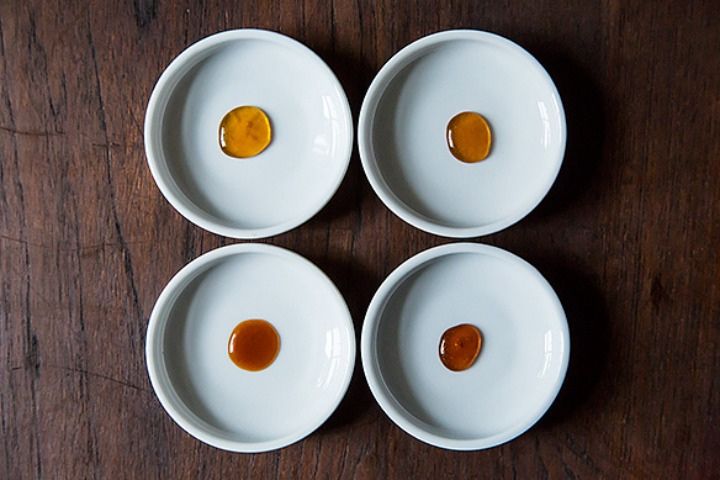There are so many great conversations on the Hotline -- it's hard to choose a favorite. But we'll be doing it, once a week, to spread the wealth of our community's knowledge -- and to keep the conversation going.
Today: Avoid sticky situations when cooking sugar with these surprisingly sweet tips and tricks.

It's clear the holidays are rapidly approaching, because questions about cooking sugar for all sorts of sweet treats keep bubbling up on the Hotline. Harold McGee taught us that caramelization involves a lot of science -- whether you want to make a perfect caramel, or are testing out a new toffee technique. You might not need a candy thermometer, but it pays to plan ahead and be precise. Even then, sometimes heating up sugar can be anything but a sweet experience -- luckily, the community is here to help:
Toffee
Donna Taylor’s last batch of toffee was sugary rather than smooth, and she wondered what happened:
-
Adianne commiserates, and recommends stirring less next time.
-
Dona suggests using an accurate thermometer and a heavy pan over medium heat: "Don't stir at all until it reaches 240° F, and then stir continually until it reaches 295 to 300° F."
Praline
Cookingintheheights made praline, and was also frustrated with crystallization:
- She barely swirled the mixture, so since over-stirring didn’t seem to be the problem, petitbleu recommends trying the recipe again with just white granulated sugar instead of a blend of sugars.
Caramel
Nll was frustrated with caramel that cooked too quickly and broke, and wondered if the heat was too high:
- For caramel, petitbleu recommends putting the candy thermometer back in the drawer. Assuming you're making a caramel sauce rather than caramel candies: "All you need to do is melt sugar with a little water (I use 1/4 cup water to 1 cup sugar) and cook without stirring it until it is deep amber (stirring can cause the caramel to crystallize when it hits the relatively cool sides of the pan). Remove it from the heat, whisk in cream (1/2 cup for 1 cup sugar) and butter (1 stick cut into small cubes), and add vanilla and salt if you like."
- "Be sure to heat the cream and use very soft butter, otherwise the cream especially will spatter somewhat dangerously," cautions boulangere.
-
Clairelivia suggests having everything measured before you start, and recommends keeping the lid on the pot in the very beginning stages, before the sugar is dissolved. She finds this helps prevent the caramel from crystalizing, and thinks it's more effective than brushing the edges of the pot with water.
Jody Walker tried a new cookie recipe that called for caramel on the inside of the cookie, but after baking, the caramel was almost inedibly hard:
-
Madison Mayberry Hofmeyer shares a trick that works better than any store-bought caramels: "Dollop small drops of purchased dulce de leche on a parchment-lined baking sheet, and refrigerate until firm (about 1 to 2 hours). Then, use the chilled dulce de leche drops in place of the caramels in your recipe. The dulce de leche stays much softer and tastier than caramel!"
What are your never-fail tips when cooking sugar for toffee, praline, or caramel? Share your stories of sweet success (or failure) in the comments!
Photo by James Ransom


See what other Food52 readers are saying.